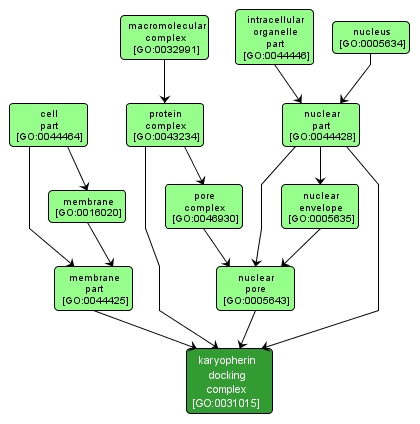GO TERM SUMMARY
|
| Name: |
karyopherin docking complex |
| Acc: |
GO:0031015 |
| Aspect: |
Cellular Component |
| Desc: |
A subcomplex of the nuclear pore complex that interacts with karyopherin-cargo complexes; a well-characterized example in Saccharomyces contains Asm4p, Nup53p, and Nup170p. |
Synonyms:
- nuclear pore subcomplex
- Asm4p-containing complex
|
|

|
INTERACTIVE GO GRAPH
|














